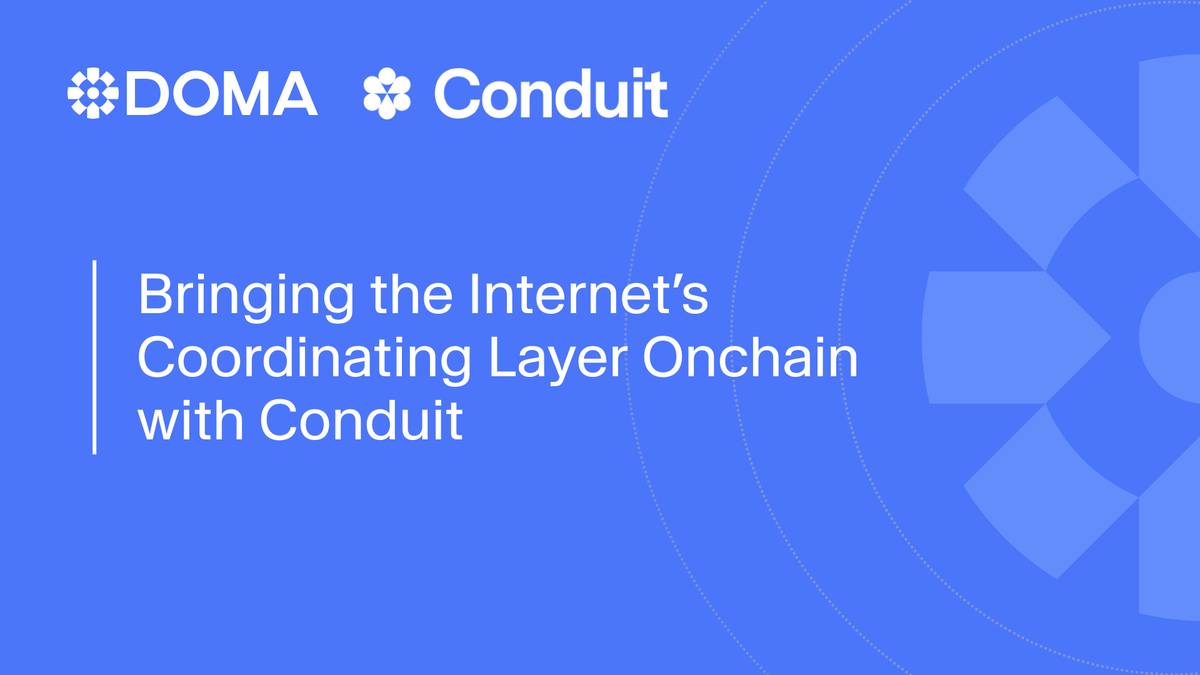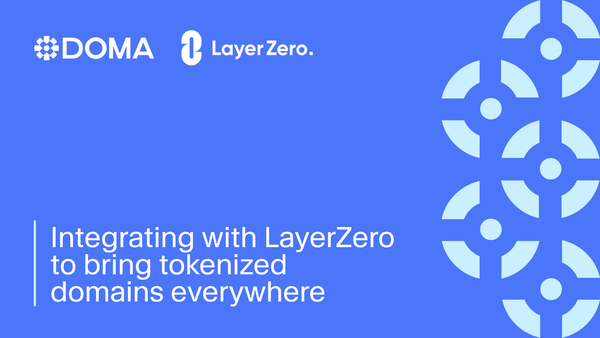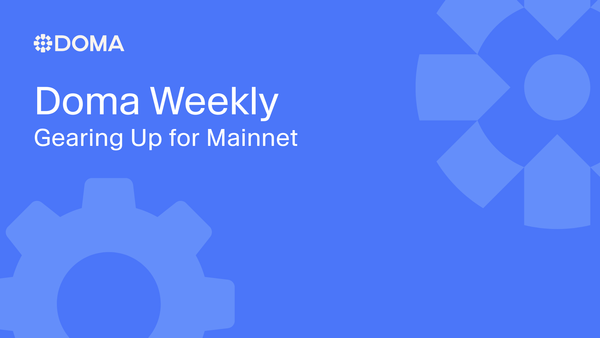Bringing the Internet’s Coordinating Layer Onchain with Conduit

We’re excited to announce our partnership with Conduit, the chain infrastructure company behind some of the most secure and scalable blockchains in Web3. Together, we’re building the internet’s coordinating layer, bringing the global Domain Name System (DNS) backbone onchain through Doma Protocol and turning 364M+ internet domains into programmable, liquid real-world assets (RWAs).
How Doma Benefits From Conduit’s Infrastructure
Conduit is behind some of the largest onchain ecosystems in existence, powering networks like Plume, Katana, and Zora. These are chains that demand high uptime, reliability, and speed, and Conduit has become synonymous with production-grade blockchain performance. That same foundation now supports Doma, which is working to bring over 364 million registered internet domains into the onchain economy.
With Conduit’s chain infrastructure powering the Doma mainnet, every tokenized domain gains access to a secure, scalable environment, which is necessary to maintain real-time updates, consistent uptime, and low-latency performance.
A Bridge Between Two Eras of the Internet
DNS is the coordination layer that maps names like google.com or ethereum.org to the infrastructure that keeps the internet running. As the world moves toward onchain coordination, the same reliability and precision that make DNS work at global scale must now extend into Web3.
By combining Doma’s DNS-compliant architecture with Conduit’s enterprise-grade blockchain infrastructure, this partnership brings the stability of traditional internet systems together with the scalability and composability of modern blockchain networks.
Domains are no longer static assets, they become dynamic digital properties that can be traded, tokenized, and integrated into decentralized finance. A single name can serve as both an active internet domain and a blockchain-native asset.
For registrars, this partnership opens a path to Web3 participation without abandoning their Web2 systems. For developers, it unlocks programmable namespaces that can serve as identifiers, collateral, or access credentials within decentralized applications. Finally, for users, it simplifies domain ownership.
What Happens Next
With Conduit powering the Doma mainnet, the foundation for the internet’s onchain coordination layer is now in place. The next phase will focus on scaling the network for production readiness and expanding registrar participation so domains from existing DNS registries can begin tokenizing directly through the protocol.
The Doma team is currently onboarding its first wave of registrars and infrastructure partners ahead of the public mainnet rollout. Over the coming months, key integrations, such as onchain registry management, subdomain issuance, and interoperability with decentralized identity and DeFi protocols, will go live in stages.
Once mainnet is active, every domain tokenized via Doma will inherit Conduit’s infrastructure guarantees: verifiable ownership, high uptime, and the ability to interact natively with Web3 applications and markets.
The backbone of the web is entering the onchain era.
For more information check out doma.xyz and conduit.xyz





